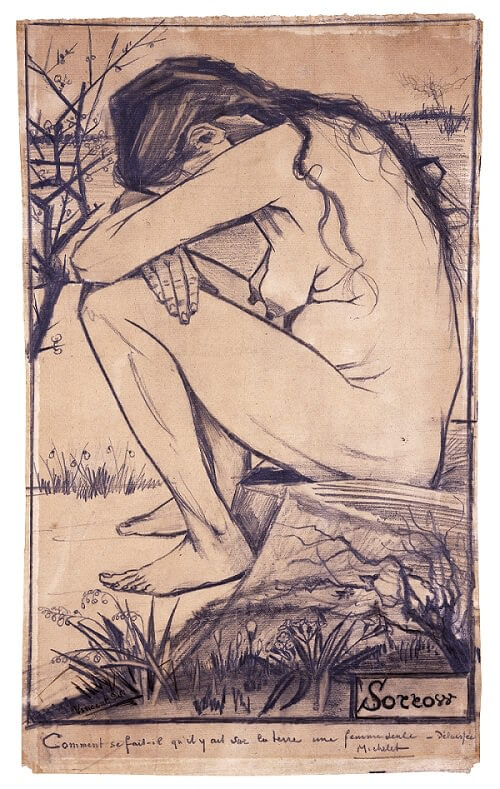Sorrow, 1882 by Vincent van Gogh

When Van Gogh was in Hague, he painted in the house of his cousin Mauve. But this relationship gave Vincent no satisfaction. Visits to the Mauritshuis contributed to his artistic education. One may suppose that here for the first time a feeling for quality showed itself in him, that it was no longer the social element, the religious legend, which interested him, when he stood long before the Rembrandt's paintings. He was on the right path, but at the beginning of 1882 an event occurred which plunged him back into the depths of self-abasement. He got to know a drunken woman who had spent her life in a state of moral and physical misery. He brought her and her children to live in his house and used her as a model. She drank and smoked cigars while he had to go hungry. There is a sketch by him, called Sorrow, in which we see her crouching hopelessly on the ground, with withered breasts. What his real feelings were for this woman is clear from the quotation from Michelet which he wrote on the sketch: 'How can there be lonely, deserted women in the world?' This relapse into the sphere of religious and social ideas lasted eighteen months. Once again it was Theo who came and set him free.
It was difficult for Vincent after this experience to rediscover his intimate connection with the brighter realms of art. He began to wander about and came to Drenthe, a lonely, impoverished place. It seems that here he felt the first symptoms of madness. The cross which he had taken up of his own free will, first in the Borinage and now with this woman, had borne him down to the ground. In the end it seemed as if he could not rise again.




















